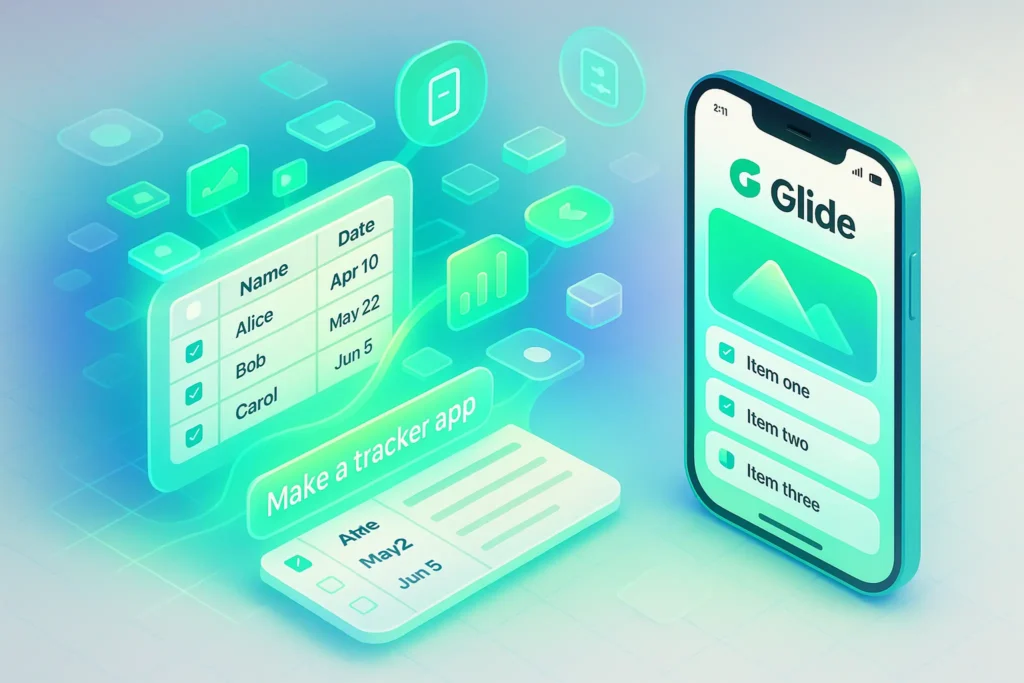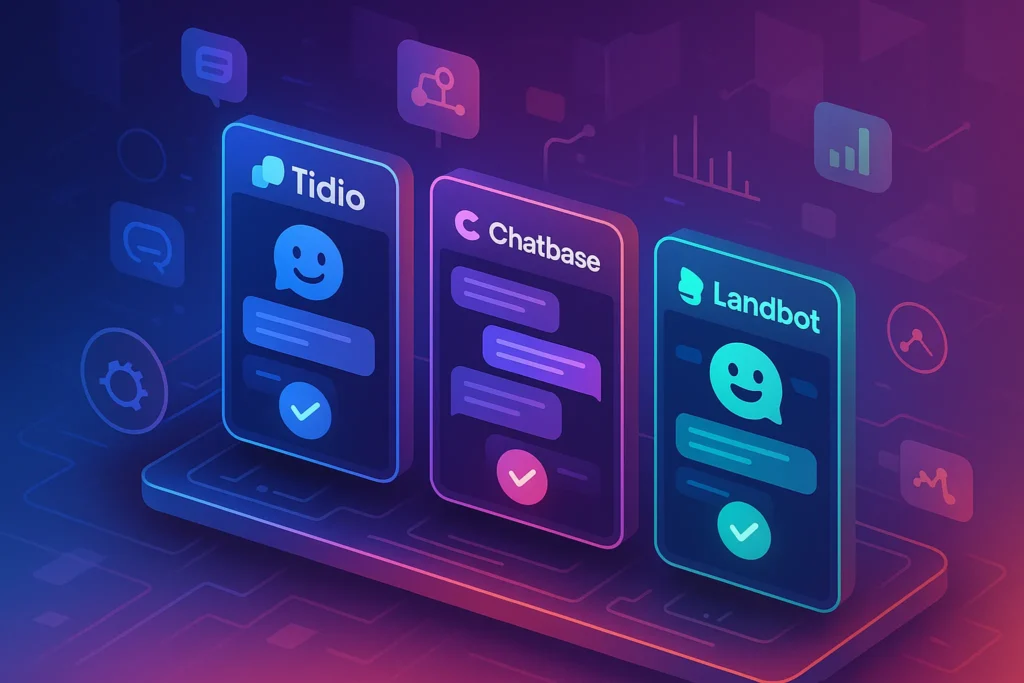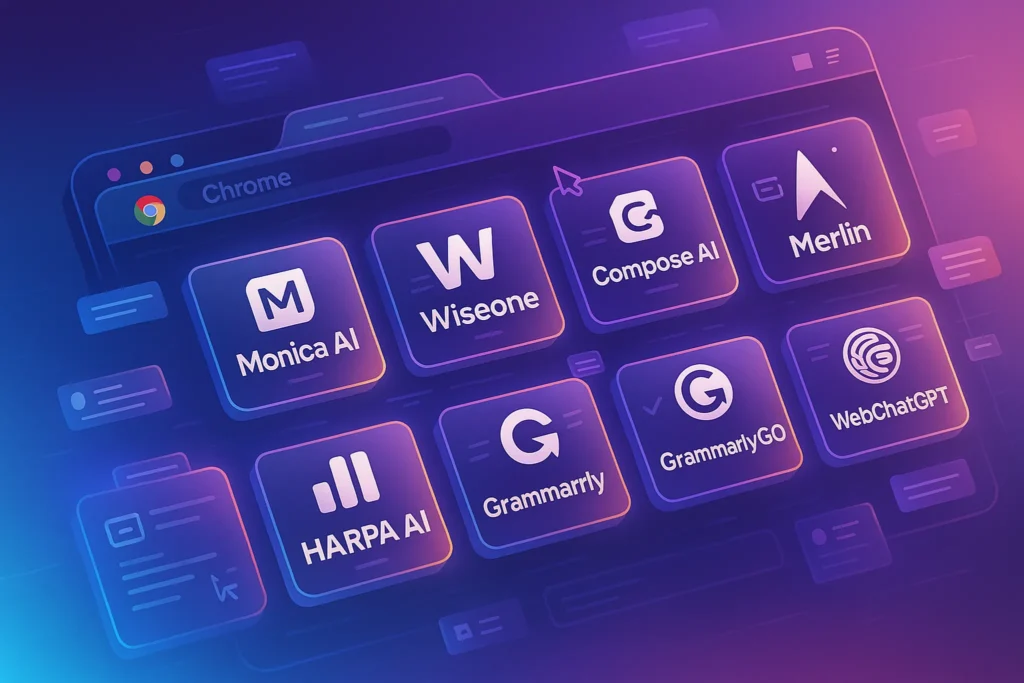🧠 Introduction
Want to build a mobile or web app in 2025—but can’t code? You’re not alone. That’s exactly where Glide comes in.
Originally launched as a simple spreadsheet-to-app converter, Glide has evolved into a powerful no-code app builder used by solo creators, educators, startup founders, and even Fortune 500 companies.
The magic? You bring a spreadsheet. Glide turns it into a functional, beautiful app. No code. No stress.
But in a world now filled with no-code tools—does Glide still stand out?
In this hands-on review, we’ll explore:
-
What Glide actually does (and doesn’t)
-
Who it’s for (and who it’s not for)
-
Real-world use cases
-
Pros, cons, pricing, and features
-
How it compares to newer tools like Google Opal
Let’s dive in and find out if Glide is still worth your time in 2025.
Glide is one of the most accessible tools to build mobile apps without coding—especially for creators and entrepreneurs who already manage data in spreadsheets. If you’re new to this space, don’t miss our full guide on How to Develop a Mobile App Without Coding, where Glide is one of our top picks.
🚀 What Makes Glide Different?
Glide’s value comes from its elegant simplicity—and surprising depth. It lets you turn any spreadsheet (Google Sheets, Excel, Airtable) into a sleek, functional app without writing a single line of code.
Here are the standout features that make Glide a top-tier no-code tool:
✅ Core Features of Glide (2025)
-
📊 Spreadsheet-First Architecture:
Use your existing data as your app’s backend—no separate database needed. -
🧩 Prebuilt Layouts & Components:
Drag-and-drop UI blocks like lists, cards, maps, calendars, and charts—customized to your brand. -
🔐 Role-Based Access Control:
Show different content to different users based on their role (admin, user, guest). -
⚙️ Action Stacks:
Build custom logic without code—like submitting forms, sending emails, updating data. -
🔌 Integrations & API Support:
Connect to external tools via Zapier, Make.com, Webhooks, and even Glide’s own API builder. -
📱 Cross-Platform Output:
Apps work beautifully on mobile, desktop, and tablet—no separate versioning needed.
📬 Want More Smart AI & No-Code Tips?
Join our free newsletter and get weekly insights on no-code platforms, AI tools, and productivity hacks for solopreneurs—delivered straight to your inbox.
⚠️ Where Glide Falls Short: Honest Limitations
While Glide is incredibly accessible, it’s important to understand its limitations—especially if you’re planning to use it for long-term or client-critical projects.
🔻 Key Limitations of Glide
-
Limited Design Control:
You can customize components to a degree, but if you’re looking for pixel-perfect design or animation layers like you’d find in Webflow or Framer, Glide won’t cut it. -
No Native App Publishing:
Glide apps are Progressive Web Apps (PWAs). If you need App Store or Google Play presence, you’ll need to wrap it manually or use third-party services. -
Restricted Complex Logic:
While “Action Stacks” are great for simple flows, conditional branching, dynamic logic, or heavy data manipulation is limited. -
Not Ideal for B2C Products:
If you’re building an app with thousands of users, requiring high performance or deep integrations, Glide might not scale well enough. -
Pricing Grows With Scale:
Free plans are generous for testing, but serious use cases (custom domains, row limits, private access) require paid plans—which can add up quickly.
🧠 Bottom Line: Glide is perfect for most non-technical builders and MVPs—but not a replacement for fully custom or native apps (yet).
It also makes a perfect companion to AI-first builders like Google Opal, which turns plain text into simple web apps. While Glide is more flexible and production-ready, Opal showcases where things are heading.
🧱 Real Templates to Inspire Your Next Glide Project
If you’re not sure where to start, Glide offers dozens of ready-to-use templates that you can customize instantly. These are ideal for learning or launching your first live app in minutes:
| Template Name | Use Case |
|---|---|
| Client Portal | Freelancers or agencies managing clients and file sharing |
| Inventory Manager | Retailers or shops tracking stock |
| Simple CRM | Solo founders or small teams tracking leads and sales |
| Event Planner | Coaches, educators, or hosts scheduling RSVPs and sessions |
| Finance Tracker | Personal budgeting, expense reports, or team cost tracking |
📎 Most templates are free and editable—just click, customize, and publish.
You can explore more on the Glide Template Gallery or build from scratch using your own data.
For those building AI-driven tools or startups, you’ll also want to explore the Best No-Code Tools for Building AI Startups—featuring Glide alongside other AI-powered platforms for founders.
🥊 Glide vs Bubble: Two Different Philosophies
Though both are “no-code app builders,” Glide and Bubble serve very different audiences—and choosing between them depends on what stage you’re at and what you’re building.
✅ Glide is best if:
-
You want to go from spreadsheet to app in under 60 minutes
-
You’re building internal tools, dashboards, or client-facing portals
-
You prioritize ease of use and mobile optimization
✅ Bubble is better if:
-
You need a full custom web application with complex workflows
-
You want total control over UI/UX, backend logic, and database structure
-
You’re planning to scale or raise funds for a SaaS product
In short:
👉 Glide = Rapid prototyping & clean UI for non-devs
👉 Bubble = Deep customization & flexibility for tech founders
🧠 If you’re just starting out and need speed, Glide is your tool. If you’re ready to build the next Notion or Airbnb clone? Time to explore Bubble.
🧰 Real-World Use Cases
Glide isn’t just for hobby projects. It powers real businesses. Some examples:
-
Client Portals for coaches, consultants, and freelancers
-
Internal Tools for teams managing inventory, HR, or onboarding
-
Membership Apps for communities and educational courses
-
Event Management Tools with RSVP, scheduling, and feedback
-
Directory Apps (like restaurant listings, local business finders, etc.)
And because it’s so spreadsheet-friendly, it’s a dream for people already managing workflows in Excel or Google Sheets.
🚀 Ready to Build Your First App in Glide?
Whether you’re launching a client portal, building an internal dashboard, or testing a startup MVP—Glide makes it possible without code.
Curious how it stacks up against emerging tools like Google Opal? Dive into our exclusive breakdown below.
👉 Want to see how Glide compares to the newest no-code tools? Check out our deep dive on Google Opal
📊 Glide vs Other No-Code App Builders (2025 Edition)
In a growing landscape of no-code tools, here’s how Glide compares to some of the top players today:
| Feature | Glide | Google Opal | Softr | Bubble |
|---|---|---|---|---|
| Backend System | Spreadsheet | AI/Prompt-Based | Airtable + DB | Custom Logic & DB |
| UI Design Flexibility | Moderate | Minimal | Moderate | High |
| Learning Curve | Easy | Very Easy | Easy | Steep |
| Best For | Portals, dashboards | MVPs, quick demos | Landing pages, portals | Full-stack apps |
| Collaboration & Access | Role-based & secure | TBD | Yes | Yes |
| Export & Control | Full App Control | Sandbox-limited | Medium | Full |
| Mobile Optimization | Excellent | Web-only | Good | Needs effort |
🧠 Glide strikes the perfect balance between ease of use and powerful customization—ideal for people who want flexibility without the complexity of Bubble.
📚 Glide Use Case Gallery
| Use Case | Who It’s For | Prompt / Goal Example |
|---|---|---|
| Team Tracker | HR/Managers | “Track employee onboarding status with role-based views” |
| Booking System | Freelancers | “Clients book sessions and receive confirmation emails” |
| Member Directory | Community Managers | “List users with bios, search, and filtering” |
| Event Planner | Creators / Teachers | “Schedule events with RSVP and location map” |
| Sales CRM | Startup Founders | “Track leads, assign reps, and log follow-up activities” |
🧠 Nerd Verdict: Is Glide Still Worth It in 2025?
Absolutely—Glide remains one of the most balanced, accessible, and scalable no-code app builders on the market. Its spreadsheet-first architecture makes it a natural entry point for beginners, but don’t let the simplicity fool you—Glide can power robust, client-ready tools.
It’s especially strong for:
-
Internal tools
-
Dashboards
-
Membership-based products
-
MVPs that need to launch fast
But Glide isn’t perfect. For startups needing full-stack flexibility or pixel-perfect control, it may feel too constrained. And while its logic system (Action Stacks) is powerful, it’s no match for custom-coded workflows or deeply conditional flows like those in Bubble or FlutterFlow.
🟢 Best For: Coaches, educators, small teams, solopreneurs
🔴 Not Ideal For: Complex web apps, games, native mobile apps
If you’re somewhere between “I have an idea” and “I want to build a product”—Glide is the bridge.
If you’re experimenting with agent-based tools that combine AI with automation, check out Top AI Agent Builders for more smart workflows you can pair with Glide.
❓ FAQ: Nerds Ask, We Answer
💬 Would You Bite?
You’ve got the ideas. Glide has the tools.
So…
What app would YOU build today if code wasn’t a barrier?
Tell us below 👇—your next side project might be closer than you think.



